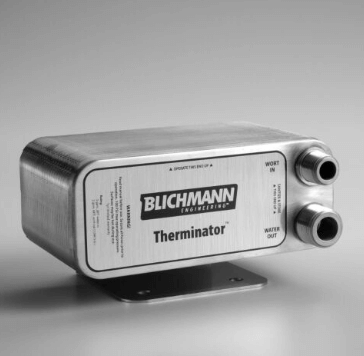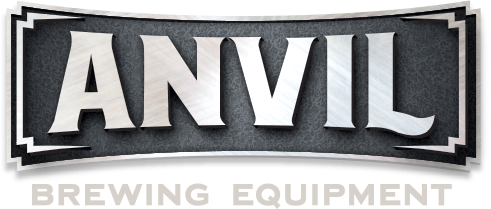Home Brewing Guide For Beginners
ANVIL BREWING EQUIPMENT 101
Your first entry into home brewing can be as confusing as it is exciting! ANVIL Brewing Equipment is a great choice for the beginner or intermediate brewer. We are here to support your journey into this exciting and rewarding hobby! Never hesitate to reach out, as we are here to help in any way we can! We’ve been in business over 22 years and have earned a reputation of great products at great prices. And more importantly, customer service and product support, second to none. As your skills advance, and you are looking to go to a new level in your hobby, the ANVIL parent company, Blichmann Engineering, is a great choice. As the pioneer in homebrewing, Blichmann Engineering has been the innovation leader for over 22 years! Until then, let’s look at how you can begin your home brewing journey

FIRST STEPS FOR NEW HOME BREWERS
Many brewers start with extract kits. These kits are simple to use and available through all homebrew retailers (local and online), and it requires just a few basic pieces of equipment. It’s a great way to learn the basics, make some fantastic beer, and provide some insight as to where you want to go with your brewing journey.
Education really is key. The best book on homebrewing is John Palmer’s How to Brew, which stairsteps from a first home brew, advancing in the brewing science and even becoming a professional brewer. Of course, there are many online resources that can answer your questions. If you have a homebrew club in your area that is a great way to gain knowledge and even have a chance to watch a brew day firsthand, all while you build lasting relationships with other local passionate brewers. The American Homebrewers Association website provides a tool to find a homebrew club close to you.


COMMON HOME BREWING “STARTER KIT” EQUIPMENT
Many homebrew supply stores sell “starter kits” for homebrewing, that can include:
A Brew Pot
A brew pot, or brew kettle, is required for boiling the wort (unfermented malt sugar). A basic 4–5-gallon pot will work for a concentrated wort boil for a typical 5 gallon finished size batch. This is for extract brewing with bags of malt syrup or powder. This is a great way to cut your teeth before diving into all grain brewing. With a concentrated wort boil, you’ll brew a wort very high in sugar content and then dilute it later with water in the fermenter. These are economically priced but have the disadvantage of needing to provide bacteria-free water for dilution to prevent contaminating your beer. The other option is buying a larger kettle, 7-10 gal, so you can brew with all the water you need which will sterilize the entire batch. ANVIL Brewing has a range of brew kettles that will last a lifetime with a built-in thermometer, volume markings, and drain valve at the bottom to make transfers to your fermenter easy in any brewing space, big or small.
A Heat Source
You’ll also need a heating source for your brewery. For the concentrated wort boils you can use your stovetop, but you’ll want to be very careful to avoid a boil over which can create quite a sticky mess! For larger kettles, choose a propane burner, like our ANVIL Forge. This burner is powerful, efficient, stable, and the taller leg options allow you to gravity drain into your fermenter.
All-In-One Systems
A more advanced way to boil your wort is with an all-in-one system like our customer most loved ANVIL Foundry™. These electric systems provide the heat source (electric), kettle, and temperature control all in one unit. They also include a wort chiller (discussed later) and a grain basket if you choose to advance your hobby into all-grain brewing. If you’re looking for the ultimate all-in-one brewing system, you won’t find a better choice than the Blichmann Engineering BrewEasy™ Classic or Compact.




A FERMENTER
The next major piece of equipment is a fermenter. This is where your wort will be converted to beer over a period of about 7-10 days.
A common fermenter for those just getting into brewing has been a is a 7–8-gallon food grade plastic bucket. While these are economical up front, they must be replaced frequently to avoid contamination issues. Another common vessel is a glass water carboy. While they last a long time, they are fragile and can be a hazard if they break.
For the ultimate in durability and sanitation, you can’t beat stainless steel. Stainless can be scoured and safely handled and will never wear like a plastic fermenter.
TYPES OF STAINLESS STEEL FERMENTERS
Bucket Style Fermenter
One is the classic bucket style and the other has a slight cone on the bottom for the hops and sediment to remain undisturbed while you use the rotating drain tube to siphon off the clear beer for packaging. The large lid makes cleaning simple. And the built in thermometer allow you to monitor fermentation temperatures.
Full Conical Bottom Fermenter
One is the classic bucket style and the other has a slight cone on the bottom for the hops and sediment. The second style is a full conical bottom fermenter. The ANVIL Crucible is the ultimate fermenter for home brewers, and you can easily collect and re-use yeast. With its versatility, you can also discharge yeast, and sediment for making lagers, without having to transfer the beer to a second vessel. The etched volume markings take the guess work out of knowing how exactly how much beer you have fermenting at any point during the process. It also features a rotating drain tube, like the bucket fermenters, to make draining clear beer a snap.


A COOLING SYSTEM
Did you know that your region’s climate can negatively impact the fermentation process, especially in warm and humid seasons? A cooling system is a solution that many brewers choose to eliminate contamination risk and ensure a healthy fermentation is taking place. ANVIL has a line of cooling systems specifically designed to complement our bucket and conical fermenters. If you’re looking for an upgraded conical fermenter that hosts the ultimate features, our parent company, Blichmann Engineering, offers the G4 Fermenator™ conical fermenter.


MEASUREMENT EQUIPMENT
Hydrometer and Sample Cylinder
A hydrometer and sample cylinder are used to confirm the amount of sugar in your wort and beer in units of specific gravity (density). While it isn’t necessary, it is a good practice to measure each batch after the boil, and also several times during fermentation. A more advanced piece of equipment is a refractometer. This is much easier and faster way to measure specific gravity, but they don’t read accurately with fermenting beer. So, consider this a luxury item..
Thermometer
A handheld thermometer is a handy piece of equipment to check your temperatures. Thermapen is a high-quality manufacturer that will be accurate and last a long time. While not absolutely necessary, getting into the measurement habit is key to advancing your homebrewing skills.
Scales
Scales for measuring hops, water salt additions, and malt is a must for any brewer! For measuring up to 6.6lb. (3 KG) and a precision of 0.05 oz. (0.1g) (after 0.5g), the ANVIL precision scale is a perfect fit, with built in timers and two trays. When and if you get into all grain brewing, you can’t beat the features of our large grain scale with remote display and the ability to precisely weight any bucket, handling up to 65 lb. with 0.02 lb. accuracy!



OXYGENATION EQUIPMENT
Your yeast needs oxygen to thrive and provide a high-quality fermentation. This is where a lot of beginning brewers struggle. The fermentation process is the single most important part of making beer. It can help your final product or hinder it. While splashing and other methods can increase the oxygen in your wort-they are marginal techniques, at best. Choose a simple and effective oxygen wand like that sold by ANVIL, as it uses oxygen cannisters you can find at any local hardware store. Or for serious brewer, choose the Blichmann Engineering in-line oxygenation system that uses economical commercial gas bottles, available from local welding supply shops.

COOLING EQUIPMENT
After boiling you’ll need to cool your wort to room temperature. The most simple way to do this is with an immersion wort chiller like this unit from ANVIL. After a quick hook up to your faucet, place in the wort in the immersion chiller. You’ll want to wait until it cools down to 68°Farenhitt and stirring as it cools can speed up the process significantly. If you’re looking for something blazing fast, consider the Blichmann Engineering Therminator™.


BOTTLING & PACKAGING
When your beer is finished, you’ll need to consider how you are storing it. Many choose to bottle. As you search the market, you’ll find that there are many bottle cappers available, but the only one engineered with homebrewers in mind, is the ANVIL bottle capper. It has a large base for stability and safety, preventing that dreaded “tip over “and conveniently folds for storage.


ADDITIONAL EQUIPMENT OPTIONS
Some additional pieces of equipment that will maximize your time vested and final product are noted below:
- Optional, but very convenient as your skills advance, is a small brew pump to transfer from one vessel to the next without manually having to lift hot wort into a fermenter for a gravity drain. Check out the very economically priced, but power packed ANVIL pump. Not only is it super easy to use but sanitize as well and as you mature in your brewing journey, you will learn that cleaning is half the battle.
- For all grain brewing, many brewers have found value in a mash stirring spoon or paddle.
- While that Brew Day aroma might be your jam, not everyone is a fan. Consider the ANVIL Steam Condenser for use with any sized ANVIL Foundry™ and many other brewing systems on the market. It will reduce the steam and moisture build up when brewing indoors, in addition to reducing the aroma.
- Reduce hops and trub from entering your fermenter with the perfect whirlpool created by Swirly™ whirpool arm, in either a 15” or 21” size! Keep in mind that you’ll need to use your pump in conjunction with the Swirly™.
- If you are looking to distill spirits at home, the ANVIL Foundry™ Couple the Turbo500 distillation head easily affixes to any size ANVIL Foundry™ all-in-one brewing system.





CONTACT US FOR BREWING SUPPORT!
Brewing is a journey and each person’s experience is unique. If you have any questions along the way, don’t hesitate to reach out our experienced home brewing technical support leaders like Doug and Jared, at [email protected] or at (765) 421-2018. We are here to support each passionate brewer and foster a stronger sense of education in the brewing industry as we forge forward, together.

